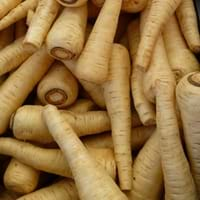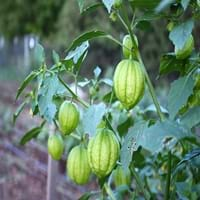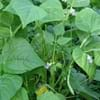Life Span
Biennial and Perennial
Annual
Origin
Europe, Western Asia
Mexico, Caribbean, Central America
Types
Not Available
Green Tomatillo, Purple Tomatillo
Habitat
waste ground, wastelands
Cultivated Beds
USDA Hardiness Zone
4-9
6-9
Sunset Zone
A1, A2, A3, H1, H2, 1a, 1b, 2a, 2b, 3a, 3b, 4, 5, 6, 7, 8, 9, 10, 11, 12, 13, 14, 15, 16, 17, 18, 19, 20, 21, 22, 23, 24
A3, H1, H2, 1a, 1b, 2a, 2b, 3a, 3b, 4, 5, 6, 7, 8, 9, 10, 11, 12, 13, 14, 15, 16, 17, 18, 19, 20, 21, 22, 23, 24
Habit
Rosette/Stemless
Oval/Rounded
Flower Color
Yellow
Yellow, Sandy Brown
Flower Color Modifier
Bicolor
Bicolor
Fruit Color
Brown, Black
Green, Purple, Yellow green
Leaf Color in Spring
Green
Green
Leaf Color in Summer
Green
Green
Leaf Color in Fall
Green
Green
Leaf Color in Winter
Not Available
Not Available
Leaf Shape
Pinnate
Lance shaped
Plant Season
Summer
Spring, Summer, Fall, Winter
Sunlight
Full Sun
Full Sun
Growth Rate
Medium
Very Fast
Type of Soil
Loam
Clay, Loam, Sand
The pH of Soil
Neutral
Neutral
Soil Drainage
Well drained
Well drained
Bloom Time
Summer
Indeterminate
Tolerances
Drought
Drought
Where to Plant?
Ground, Pot
Container, Ground
How to Plant?
Seedlings
Seedlings
Plant Maintenance
Medium
Medium
Watering Requirements
Average Water Needs, Do Not over Water, Keep the ground moist but not water-logged
Average Water Needs
In Summer
Lots of watering
Drought Tolerant, Average Water
In Spring
Moderate
Moderate
In Winter
Average Water
Average Water
Soil Type
Loam
Clay, Loam, Sand
Soil Drainage Capacity
Well drained
Well drained
Sun Exposure
Full Sun
Full Sun
Pruning
Remove damaged leaves, Remove dead branches, Remove dead leaves
Remove all suckers, Remove wet foliage
Fertilizers
All-Purpose Liquid Fertilizer
All-Purpose Liquid Fertilizer
Pests and Diseases
Aphids, Armyworm, Cutworms, Downy mildew, Pitch canker, Red blotch
Fungal Diseases
Plant Tolerance
Drought
Drought
Flowers
Showy
Insignificant
Flower Petal Number
Not Available
Single
Fragrant Bark/Stem
Yes
No
Foliage Texture
Fine
Medium
Foliage Sheen
Matte
Matte
Attracts
Butterflies
Birds, Flea beetles
Allergy
Stomach burn
Arthritis, Inflammation
Aesthetic Uses
Not Used For Aesthetic Purpose
Not Used For Aesthetic Purpose
Beauty Benefits
Blood purifying, Good for skin
Good for skin
Environmental Uses
Air purification
Air purification
Medicinal Uses
Aphrodisiac
Cancer, Diabetes, Energy, Opthalmic
Part of Plant Used
Root
Fruits
Other Uses
Food for animals, Used as a nutritious food item
Used for making green salsas and chilli sauce, Used in salads
Used As Indoor Plant
Yes
No
Used As Outdoor Plant
Yes
Yes
Garden Design
Edible, Herb, Vegetable
Edible, Herb / Vegetable
Botanical Name
PASTINACA sativa
PHYSALIS philadelphica
Common Name
Parsnip
Green Tomato, Mexican Groundcherry, Tomatillo
In Hindi
चुकंदर
Tomatillos
In German
Pastinake
Tomatillos
In French
Panais
Tomatilles
In Spanish
Chirivía
Tomatillos
In Greek
Είδος δαυκίου
Tomatillos
In Portuguese
cherivia
Tomatillos
In Polish
Pasternak
Tomatillos
In Latin
parsnip
Tomatillos
Phylum
Magnoliophyta
Magnoliophyta
Class
Magnoliopsida
Magnoliopsida
Family
Apiaceae
Solanaceae
Clade
Angiosperms, Asterids, Eudicots
Angiosperms, Asterids, Eudicots
Tribe
Not Available
Physaleae
Subfamily
Not Available
Solanoideae
Number of Species
Not Available
Not Available
Season and Care of Parsnip and Tomatillo
Season and care of Parsnip and Tomatillo is important to know. While considering everything about Parsnip and Tomatillo Care, growing season is an essential factor. Parsnip season is Summer and Tomatillo season is Summer. The type of soil for Parsnip is Loam and for Tomatillo is Clay, Loam, Sand while the PH of soil for Parsnip is Neutral and for Tomatillo is Neutral.
Parsnip and Tomatillo Physical Information
Parsnip and Tomatillo physical information is very important for comparison. Parsnip height is 15.20 cm and width 7.60 cm whereas Tomatillo height is 60.00 cm and width 90.00 cm. The color specification of Parsnip and Tomatillo are as follows:
Parsnip flower color: Yellow
Parsnip leaf color: Green
Tomatillo flower color: Yellow and Sandy Brown
- Tomatillo leaf color: Green
Care of Parsnip and Tomatillo
Care of Parsnip and Tomatillo include pruning, fertilizers, watering etc. Parsnip pruning is done Remove damaged leaves, Remove dead branches and Remove dead leaves and Tomatillo pruning is done Remove all suckers and Remove wet foliage. In summer Parsnip needs Lots of watering and in winter, it needs Average Water. Whereas, in summer Tomatillo needs Drought Tolerant, Average Water and in winter, it needs Average Water.





